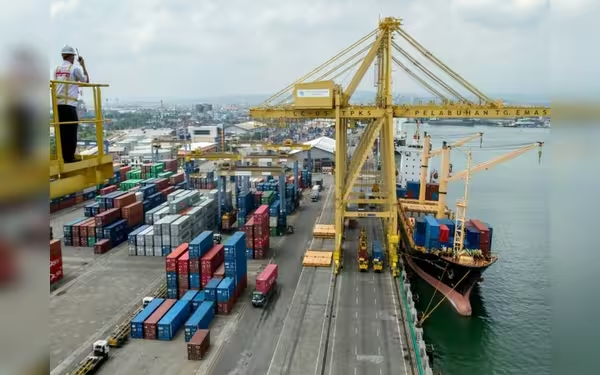Saturday, September 28, 2024 08:15 PM
Malaysia Exports Surge 12.1% in August, Imports Rise Sharply
- Exports increased by 12.1% year-on-year in August.
- Imports surged by 26.2%, exceeding forecasts.
- Trade surplus fell short of expectations at 5.67 billion ringgit.
 Image Credits: brecorder
Image Credits: brecorderMalaysia's exports rose 12.1% in August, while imports surged 26.2%, leading to a lower-than-expected trade surplus.
KUALA LUMPUR: In a positive turn of events for Malaysia's economy, the country's exports saw a significant increase of 12.1% in August compared to the same month last year. This growth slightly surpassed market expectations, which had predicted an 11.8% rise, according to a recent poll conducted by Reuters among economists. Such figures indicate a robust performance in the export sector, reflecting Malaysia's ongoing recovery and resilience in the face of global economic challenges.
On the other hand, imports also experienced a notable surge, growing by 26.2% year-on-year in August. This increase was even higher than the 21.2% growth that analysts had forecasted. The rise in imports suggests that domestic demand is strong, as businesses and consumers are purchasing more goods from abroad. This trend can be seen as a double-edged sword; while it indicates a thriving economy, it also raises concerns about the trade balance.
Despite the impressive export growth, Malaysia recorded a trade surplus of 5.67 billion ringgit (approximately $1.33 billion) in August. This figure fell short of the anticipated surplus of 11 billion ringgit, as per the poll forecasts. A trade surplus occurs when a country exports more than it imports, which is generally seen as a positive economic indicator. However, the lower-than-expected surplus may prompt discussions among policymakers regarding the sustainability of this growth.
While Malaysia's export figures for August are encouraging, the significant rise in imports and the lower-than-expected trade surplus highlight the complexities of the current economic landscape. As the nation continues to navigate through these changes, it will be crucial for stakeholders to monitor these trends closely. Understanding the balance between exports and imports will be vital for ensuring long-term economic stability and growth. The data serves as a reminder that while growth is essential, it must be managed carefully to maintain a healthy economy.













